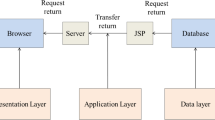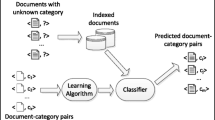Abstract
In order to improve the effect of intelligent processing of physical education resources, this paper combines genetic algorithms and unsupervised learning methods to study the processing of physical education videos and images, which approximately maintains the neighbor structure relationship of the original sample data and reduces the loss of sample local information. Moreover, this paper constructs a graph model structure between the comprehensive compressed data and the input data. In order to reduce the complexity of the solution method of the graph model and reduce the impact of the method of decomposing the spectrogram into the characteristic function on the hash algorithm, this paper designs an intelligent physical education resource processing method based on genetic algorithms and unsupervised learning methods and constructs system functional modules. Finally, this paper designs experiments to verify the performance of the method proposed in this paper. Through comparative analysis of experiments, it can be known that the method proposed in this paper has good results.
















Similar content being viewed by others
References
Viktoratos L, Tsadiras A, Bassiliades N (2018) Combining community-based knowledge with association rule mining to alleviate the cold start problem in context-aware recommender systems. Expert Syst Appl 101:78–90
Li M, Yuan M, Xu Y (2015) An approach to task-oriented knowledge recommendation based on multi-granularity fuzzy linguistic method. Kybernetes 44(3):460–474
Qiu T, Han TY, Zhong LX et al (2014) Redundant correlation effect on personalized recommendation. Comput Phys Commun 185(2):489–494
Zhou W, Han W (2019) Personalized recommendation via user preference matching. Inf Process Manage 55(3):955–968
He Y, Tan J (2015) Study on SINA micro-blog personalized recommendation based on semantic network[J]. Expert Syst Appl 42(10):4797–4804
Mao J, Lu K, Li G et al (2016) Profiling users with tag networks in diffusion-based personalized recommendation. J Inform Sci 42(5):711–722
Zuo Y, Gong M, Zeng J et al (2015) Personalized recommendation based on evolutionary multi-objective optimization [research frontier]. Comput Intell Mag IEEE 10(1):52–62
Costa G, Ortale R (2016) Model-based collaborative personalized recommendation on signed social rating networks. ACM Trans Internet Technol 16(3):1–21
Guan Y, Wei Q, Chen G (2019) Deep learning based personalized recommendation with multi-view information integration. Decision Support Syst 118:58–69
Yang C, Fan Q, Wang T et al (2019) RepoLike: a multi-feature-based personalized recommendation approach for open-source repositories. Front Inform Technol Electronic Eng 20(02):86–101
Lin Q, Wang X, Hu B et al (2018) Multiobjective personalized recommendation algorithm using extreme point guided evolutionary computation. Complexity 2018(3):1–18
Dazhi XU (2020) Research on music culture personalized recommendation based on factor decomposition machine. Pers Ubiquit Comput 24(2):247–257
Bach NX, Hai ND, Phuong TM (2016) Personalized recommendation of stories for commenting in forum-based social media. Inf Sci 352–353(2):48–60
Guo D, Zhu Y, Xu W et al (2016) How to find appropriate automobile exhibition halls: Towards a personalized recommendation service for auto show. Neurocomputing 213:95–101
Logesh R, Subramaniyaswamy V, Vijayakumar V et al (2020) Hybrid bio-inspired user clustering for the generation of diversified recommendations. Neural Comput Applic 32:2487–2506
Pilani A, Mathur K, Agrawal H, Chandola D, Tikkiwal VA, Kumar A (2021) Contextual bandit approach-based recommendation system for personalized Web-based Services. Appl Artif Intell 35(7):489–504
Liji U, Chai Y, Chen J (2018) Improved personalized recommendation based on user attributes clustering and score matrix filling. Comput Stand Interfaces 57(5):59–67
Ha T, Lee S (2017) Item-network-based collaborative filtering: a personalized recommendation method based on a user’s item network. Inf Process Manage 53(5):1171–1184
Intayoad W, Becker T, Temdee P (2017) Social context-aware recommendation for personalized online learning. Wireless Pers Commun 97(1):1–17
Xia J, Li G, Cao Z et al (2018) Personalized exercise recommendation algorithm combining learning objective and assignment feedback. J Intell Fuzzy Syst 35(3):2965–2973
Logesh R, Subramaniyaswamy V, Malathi D et al (2020) Enhancing recommendation stability of collaborative filtering recommender system through bio-inspired clustering ensemble method. Neural Comput Applic 32:2141–2164
Subramaniyaswamy V, Manogaran G, Logesh R et al (2018) An ontology-driven personalized food recommendation in IoT-based healthcare system. J Supercomput 2:1–33
Author information
Authors and Affiliations
Corresponding authors
Ethics declarations
Conflict of interest
The authors declared that they have no conflicts of interest to this work. We declare that we do not have any commercial or associative interest that represents a conflict of interest in connection with the work submitted.
Additional information
Publisher's Note
Springer Nature remains neutral with regard to jurisdictional claims in published maps and institutional affiliations.
Rights and permissions
About this article
Cite this article
Li, C., Liu, B. & Kim, K. Intelligent unsupervised learning method of physical education image resources based on genetic algorithm. Neural Comput & Applic 35, 4225–4242 (2023). https://doi.org/10.1007/s00521-022-07021-x
Received:
Accepted:
Published:
Issue Date:
DOI: https://doi.org/10.1007/s00521-022-07021-x




